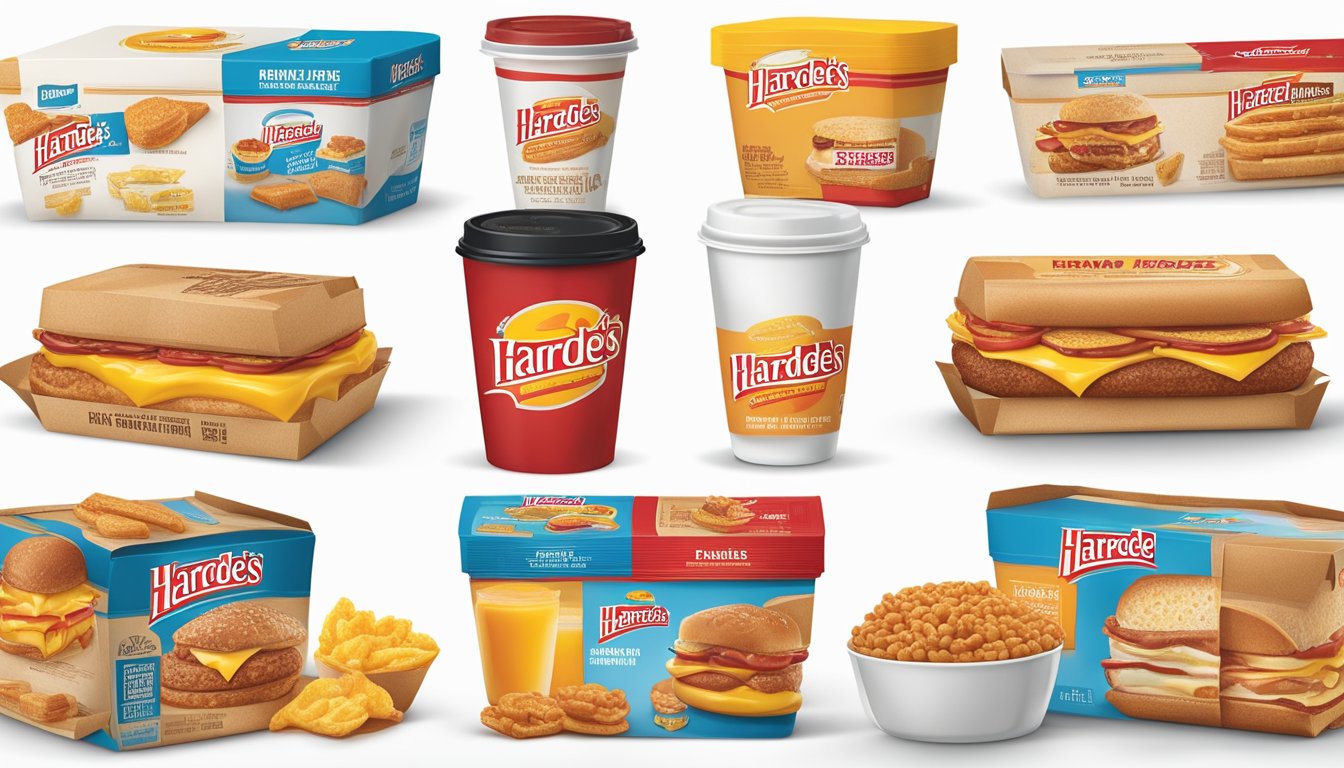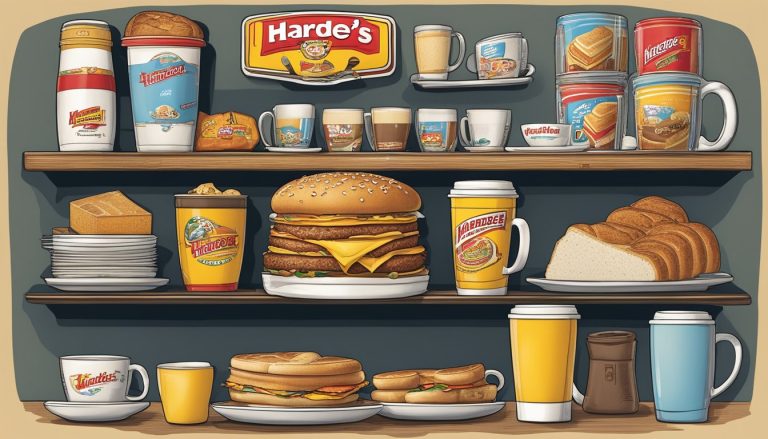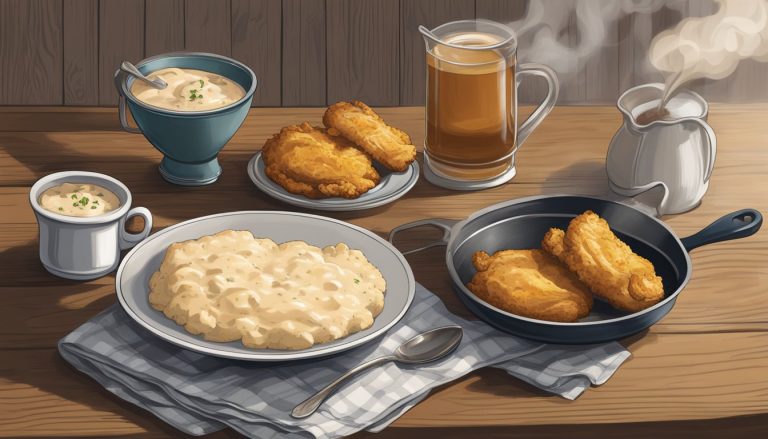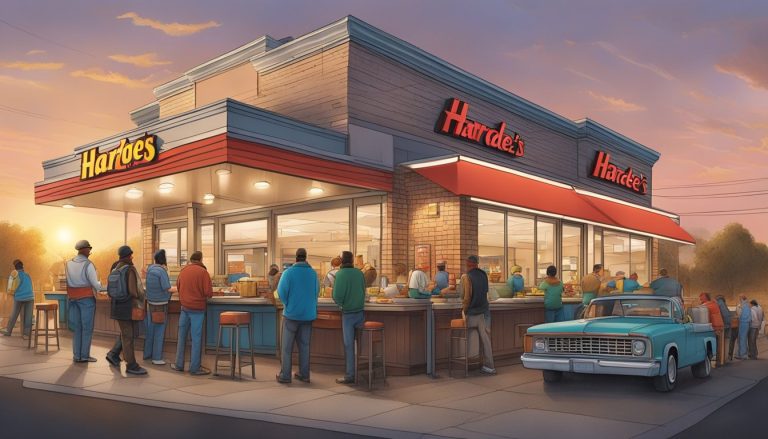Hardee’s, a prominent fast-food chain founded in 1960, has undergone significant changes in its breakfast packaging over the years. The company’s journey from a small hamburger stand to a major restaurant chain with over 1,800 locations has been marked by evolving branding strategies and menu offerings.
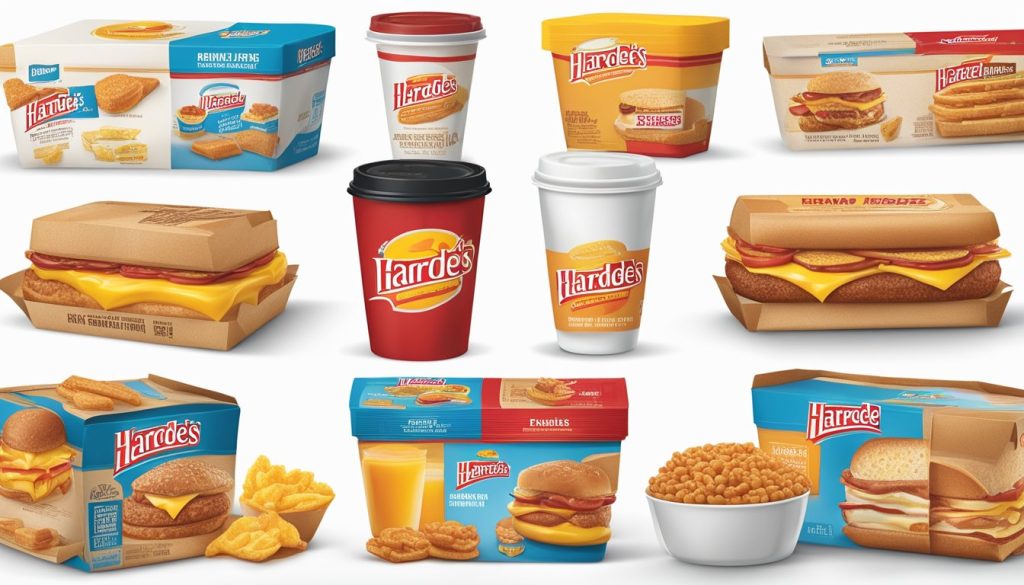
Hardee’s breakfast packaging has transformed from simple, functional designs in the 1970s to more eye-catching and brand-focused presentations in recent years. This shift reflects broader trends in the fast-food industry, where packaging serves not only to contain food but also as a crucial marketing tool.
The evolution of Hardee’s breakfast packaging mirrors the company’s commitment to innovation and customer satisfaction. From their signature Made From Scratch™ Biscuits to Hand-Breaded Chicken Tenders™, Hardee’s has consistently adapted its packaging to showcase its unique menu items and appeal to changing consumer preferences.
The Beginning of Hardee’s Breakfast Journey

Hardee’s breakfast offerings have their roots in the company’s early days. The chain’s founder laid the groundwork for what would become an iconic morning menu.
Wilber Hardee and the Foundations
Wilber Hardee opened the first Hardee’s restaurant in Greenville, North Carolina in 1960. He drew inspiration from McDonald’s success, aiming to provide quick service and affordable meals. Hardee’s initial focus was on char-grilled burgers, but the groundwork for breakfast was already being laid.
The original Hardee’s location, formerly known as Dee’s Drive-In, became the testing ground for new ideas. Wilber Hardee’s entrepreneurial spirit drove the company’s early growth and menu experimentation.
Early Menu Items and the Introduction of Breakfast
In the early 1970s, Hardee’s began expanding its menu beyond burgers and fries. The chain recognized the potential of the breakfast market and started developing morning offerings. Initial breakfast items likely included simple fare such as:
- Breakfast sandwiches
- Biscuits
- Coffee
- Orange juice
Hardee’s experimented with various breakfast options, refining their menu based on customer preferences. The introduction of made-from-scratch biscuits became a defining feature of Hardee’s breakfast, setting them apart from competitors.
By the mid-1970s, Hardee’s had established a solid breakfast menu, paving the way for future innovations in both food items and packaging.
Hardee’s Expansion and Diversification

Hardee’s has undergone significant growth and menu evolution since its founding in 1960. The company’s expansion strategy and breakfast innovations have played key roles in establishing its presence in the fast food market.
Growth in Number of Locations
Hardee’s rapid expansion began shortly after its inception. By 1963, the chain had grown to 5 locations in North Carolina. The company’s franchise model proved successful, with 95% of its 2,200 units now owned by franchisees.
Hardee’s offers three franchise formats:
- Standard Hardee’s
- Dual Concept
- Co-Brand locations
This flexibility has allowed for strategic market penetration across various regions. In 1981, Canadian company Imasco acquired Hardee’s, further fueling its growth. The chain reached its peak with over 3,000 locations in the late 1990s.
Menu Evolution and Breakfast Innovation
Hardee’s menu has evolved significantly since its early days of hamburgers and fries. The introduction of breakfast items in the 1970s marked a major shift in the company’s offerings.
Key breakfast innovations include:
- Sausage Biscuits (introduced in 1977)
- Made-From-Scratch Biscuits (1980s)
- Breakfast Platters with eggs, bacon, and hash rounds
Hardee’s breakfast menu now features a wide variety of items:
- Biscuit sandwiches
- Breakfast burritos
- Loaded breakfast bowls
The chain continues to expand its breakfast options, catering to changing consumer preferences and dietary needs. This focus on breakfast innovation has helped Hardee’s differentiate itself in the competitive fast food market.
Breakfast Packaging Across the Decades

Hardee’s breakfast packaging evolved significantly from the 1970s through the 1980s. The company’s brand image underwent modernization as consumer preferences and packaging technologies changed.
1970s and 1980s: The Formative Years
In the 1970s, Hardee’s introduced its breakfast menu, necessitating new packaging designs. Early breakfast items were served in simple paper wraps and cardboard boxes. The iconic Happy Star mascot began appearing on packaging during this period.
By the 1980s, Hardee’s expanded its breakfast offerings. This led to more diverse packaging needs. Foam containers became popular for keeping breakfast sandwiches warm. Paper bags with the Hardee’s logo were used for to-go orders.
Colors shifted from basic white to more vibrant oranges and reds. These changes helped Hardee’s stand out in the competitive fast-food breakfast market.
Modernizing Hardee’s Brand Image
The late 1980s saw Hardee’s push for a more modern look. Packaging designs became sleeker and more uniform across menu items. The company introduced more environmentally-friendly materials in response to growing ecological concerns.
Atlanta-based designers helped create a cohesive brand identity. This included updating the Happy Star logo and incorporating it more prominently on breakfast packaging. New graphics and typography gave Hardee’s a fresher, more contemporary appeal.
Breakfast combo meals gained popularity, leading to the development of specialized trays and carriers. These allowed customers to easily transport multiple items. The packaging also began featuring more nutritional information to meet changing consumer demands.
Marketing Evolution and Consumer Perception

Hardee’s breakfast marketing strategy has undergone significant changes over the years, adapting to consumer preferences and media trends. The brand has leveraged various channels to promote its morning offerings and shape public perception.
Television and Radio Advertising
Hardee’s television ads have played a crucial role in promoting breakfast items. In the 1980s and 1990s, commercials focused on showcasing menu variety and value. By the 2000s, the brand shifted to more provocative ads featuring models to grab attention. Radio spots complemented TV campaigns, often highlighting limited-time promotions and new menu additions.
CKE Restaurants, Hardee’s parent company, invested heavily in prime-time slots to reach a wider audience. Memorable jingles and catchy slogans helped increase brand recall. The “Made from Scratch” campaign emphasized fresh, homemade quality to differentiate Hardee’s breakfast from competitors.
Impact of Advertising on Breakfast Sales
Effective marketing campaigns directly influenced Hardee’s breakfast sales. Data showed a correlation between ad spend and morning traffic increases. The “Rise and Shine” promotion in 2015 led to a 5% boost in breakfast revenue.
Targeted ads during morning commute hours on both TV and radio proved particularly effective. Social media engagement also played a role, with user-generated content and influencer partnerships driving awareness of Hardee’s breakfast offerings.
Consumer surveys indicated improved perception of Hardee’s breakfast quality following sustained advertising efforts. Brand loyalty among breakfast customers increased by 12% between 2020 and 2025, attributed largely to consistent messaging across multiple platforms.
Product and Packaging Innovations

Hardee’s breakfast menu evolved through signature item launches and strategic packaging choices. These changes aimed to enhance brand recognition and improve the customer experience.
Introduction of Signature Breakfast Items
Hardee’s revolutionized its breakfast offerings with the introduction of Made-From-Scratch Biscuits in the 1970s. These homemade-style biscuits quickly became a cornerstone of the menu. The chain expanded its morning selection with Hash Rounds, a crispy potato side dish that complemented the biscuits.
Breakfast Sandwiches emerged as another popular option, featuring various combinations of eggs, cheese, and meats on biscuits or croissants. Hardee’s also developed Breakfast Favorites platters, offering larger portions for heartier appetites.
The Apple Turnover joined the lineup as a sweet treat, providing a dessert-like option for morning customers.
The Role of Packaging in Branding
Hardee’s recognized the importance of packaging in reinforcing brand identity. The company designed containers that prominently displayed its logo and signature red and white color scheme.
For Made-From-Scratch Biscuits and Breakfast Sandwiches, Hardee’s utilized wax paper wraps. These wraps kept food warm while allowing for easy handling. Hash Rounds came in specially designed cartons to maintain crispiness.
Breakfast Favorites platters were served in compartmentalized containers, keeping different items separate and visually appealing. Apple Turnovers received individual sleeves to preserve freshness and facilitate on-the-go consumption.
Hardee’s also introduced combo meal packaging, bundling items in branded bags or boxes for convenience and increased sales.
Operational Excellence in the Fast-Food Industry

Fast-food chains have revolutionized their operations to enhance efficiency and sustainability. These improvements focus on streamlining breakfast services and implementing eco-friendly packaging solutions.
Streamlining the Breakfast Operation
Fast-food restaurants have optimized their breakfast operations to meet growing demand. Many chains now offer all-day breakfast options, requiring kitchen reorganization and staff training. Automated cooking equipment has reduced preparation times for popular items like eggs and pancakes.
Drive-thru services have been enhanced with dual lanes and digital menu boards. These upgrades cut wait times and improve order accuracy. Mobile ordering and payment systems allow customers to skip lines entirely.
Some chains have introduced breakfast delivery services. This expansion required logistics planning and packaging innovations to maintain food quality during transport.
Sustainability Initiatives in Packaging
Fast-food companies are increasingly adopting sustainable packaging for breakfast items. Recyclable and compostable materials have replaced traditional plastic and styrofoam containers. Many chains now use paper-based wraps for sandwiches and biodegradable cups for coffee.
Some restaurants have implemented reusable container programs for regular customers. These initiatives reduce waste and foster customer loyalty. Packaging redesigns have also focused on reducing material usage without compromising food safety.
Digital receipts and menu boards further decrease paper waste. These technology-driven solutions align with broader industry efforts to minimize environmental impact.
The Future of Hardee’s Breakfast Branding

Hardee’s breakfast branding is poised for innovation to meet evolving consumer needs. The company aims to balance its signature indulgent offerings with healthier options while enhancing convenience through improved packaging and digital integration.
Consumer Trends and Expectations
Hardee’s is adapting to changing breakfast preferences. Health-conscious consumers are driving demand for nutritious options alongside traditional favorites. The brand is exploring plant-based alternatives and protein-rich meals to cater to diverse dietary needs.
Sustainability is becoming a key focus. Hardee’s is investigating eco-friendly packaging materials to reduce environmental impact. This shift aligns with growing consumer awareness of sustainable practices in the fast-food industry.
Digital ordering and delivery services are expanding. Hardee’s is enhancing its mobile app and partnering with third-party delivery platforms to offer seamless breakfast experiences. This move caters to the increasing preference for on-the-go dining and at-home consumption.
Ongoing Commitment to Quality and Convenience
Hardee’s continues to prioritize quality ingredients in its breakfast offerings. The brand is sourcing premium meats, eggs, and produce to maintain its reputation for satisfying meals. Signature items like Made from Scratch Biscuits remain central to the menu.
Convenience is getting a boost through innovative packaging. Hardee’s is developing containers that keep food hot and fresh during transit. These improvements aim to preserve the quality of breakfast items for takeout and delivery orders.
The brand is also exploring customization options. Build-your-own breakfast sandwiches and bowls may become available, allowing customers to tailor their meals to personal tastes and dietary preferences.

